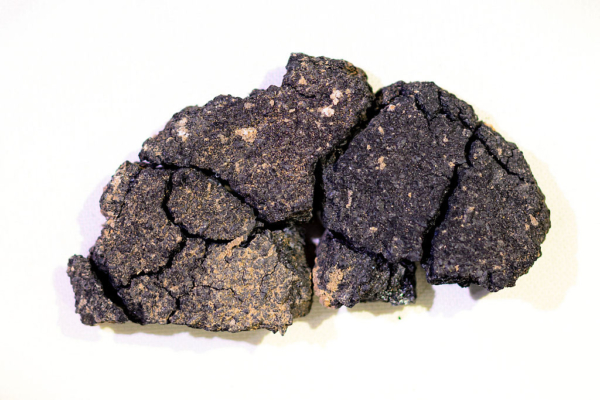Archaeologists in Turkey made a stunning discovery recently when they unearthed a 5000-year-old bread that caused quite a sensation locally. What made it even more remarkable was the collaboration between the archaeologists and a bakery to recreate the ancient bread recipe. The bread sold out within hours of its release, as people were eager to taste what bread from 5000 years ago would have been like.
This ancient bread, baked during the Bronze Age in Turkey, was found at the Kulluoba archaeological site in Eskisehir province, central Turkey. Although archaeologists had unearthed the bread during excavations in September 2024, the news was only recently revealed to the public.
Researchers described the charred bread, with a diameter of about 5 inches, as buried under the entrance of a residence dating back to around 3300 BC. A piece of the bread had been torn off before it was buried.
In the field of archaeology, finding well-preserved ancient food is extremely rare. Murat Turkteki, an archaeologist and excavation team leader, told Agence France-Presse, “Finding a whole bread while excavating is very rare. Usually, only bread crumbs are found.”
“But here, it was preserved because it was charred and buried underground,” he said.
This is one of the oldest baked breads discovered by archaeologists during excavations and is currently on display at the Eskisehir Archaeological Museum in Turkey.
Eskisehir Mayor Ayse Unluce expressed her deep emotions about the team’s discovery, as it showcases the lives of people in the region thousands of years ago. She expressed interest in reproducing the bread as a commemoration of the past.
To uncover the secrets of this ancient bread’s recipe, archaeologists took the unearthed bread to the laboratory for analysis. Their research revealed that the bread was made from ground einkorn wheat (an ancient wheat variety), lentils, and leaves of a plant used as yeast to help the bread ferment. Einkorn wheat is an ancient wheat adapted to dry conditions, shedding light on the climate in central Turkey during the Bronze Age.
Subsequently, scientists collaborated with a team of bakers to attempt recreating the bread. Unfortunately, the ancient einkorn wheat was no longer available in Turkey. Therefore, to find ingredients closely resembling the original recipe, the team decided to use Kavılca wheat, a wheat variety similar to einkorn wheat. They also added bulgur and lentils to the bread.
The first batch of bread sold out within hours of baking. The yellow, cake-like bread became popular among local residents. A customer named Suzan Kuru told Agence France-Presse that she was “curious about the taste of this ancient bread” and rushed to buy it for fear of missing out.
According to the bakery manager Serap Güler, the bread was made with “ancient wheat flour, lentils, and bulgur, rich in nutrients, filling, low in gluten, and free of preservatives.”

